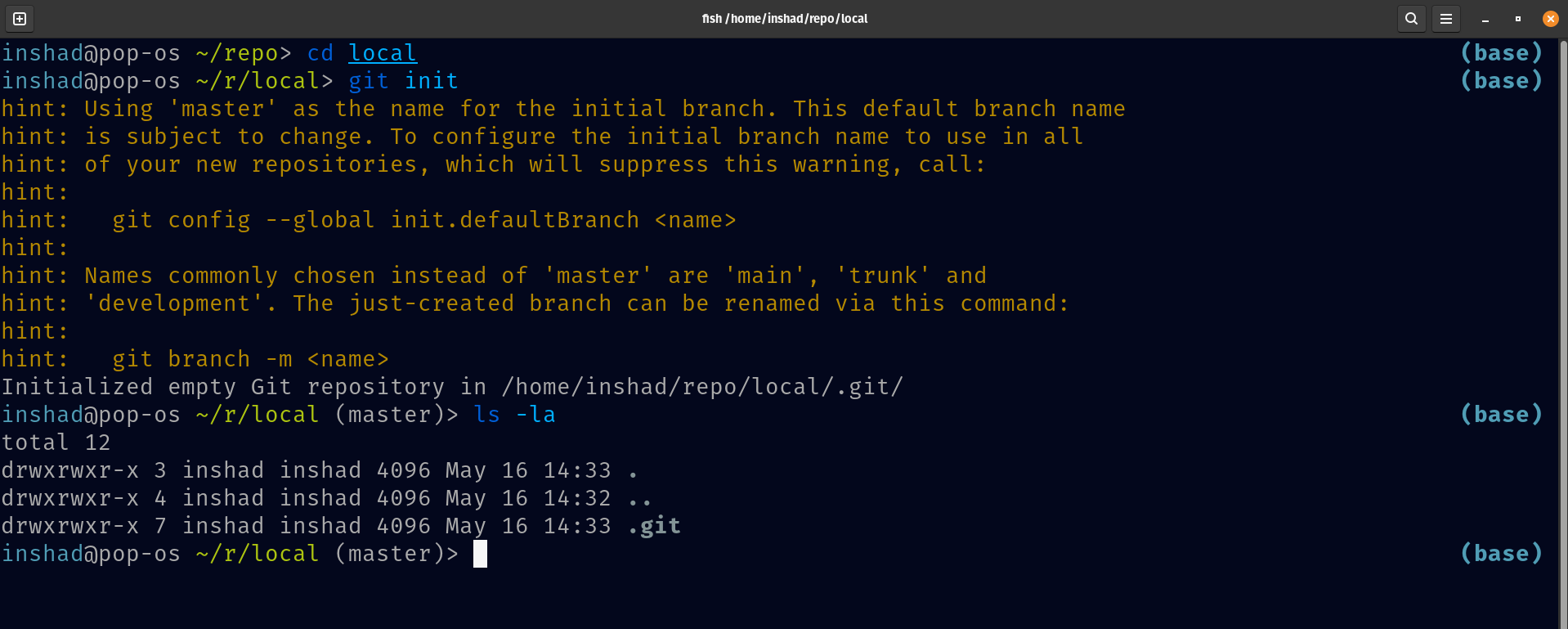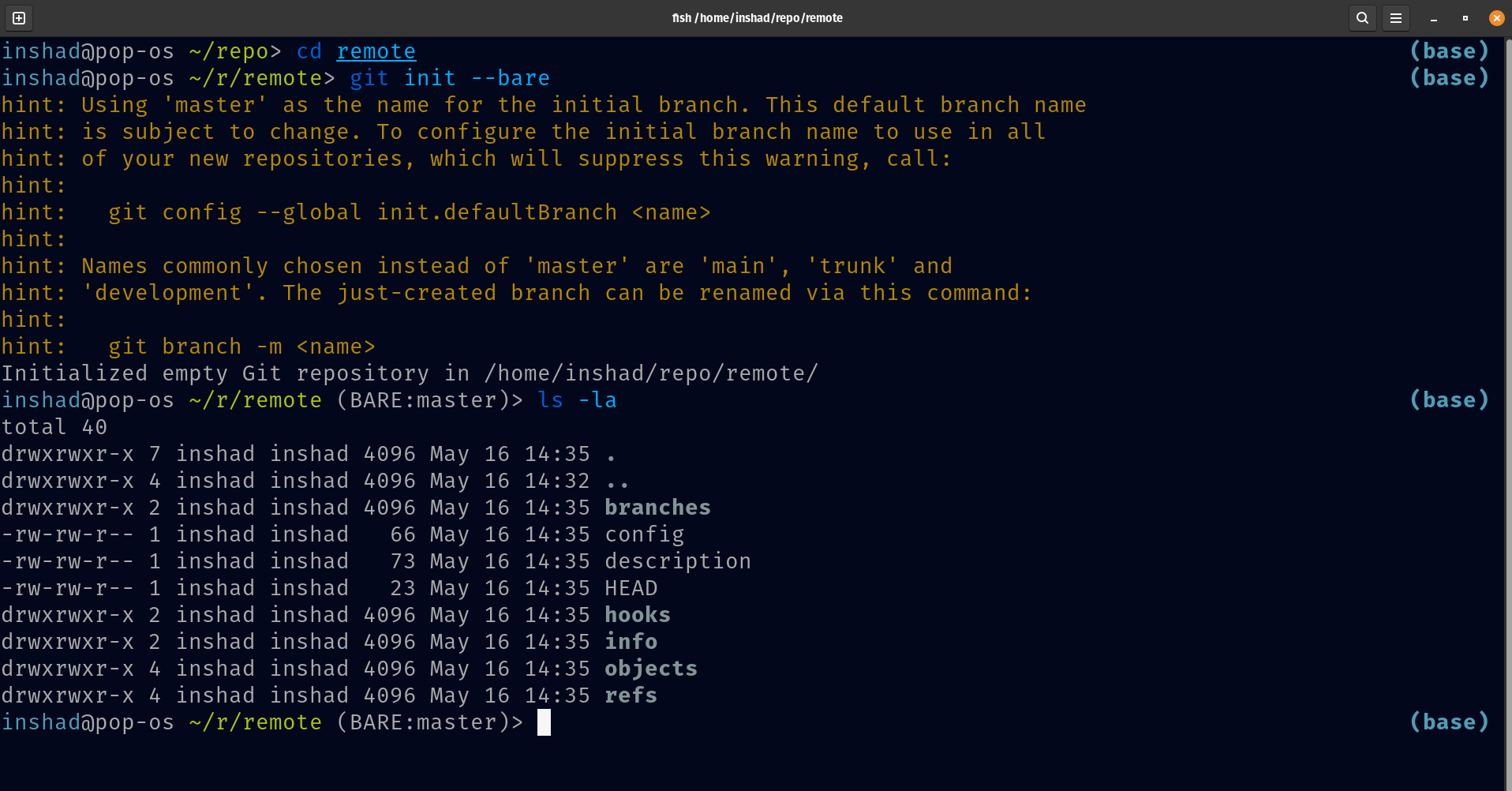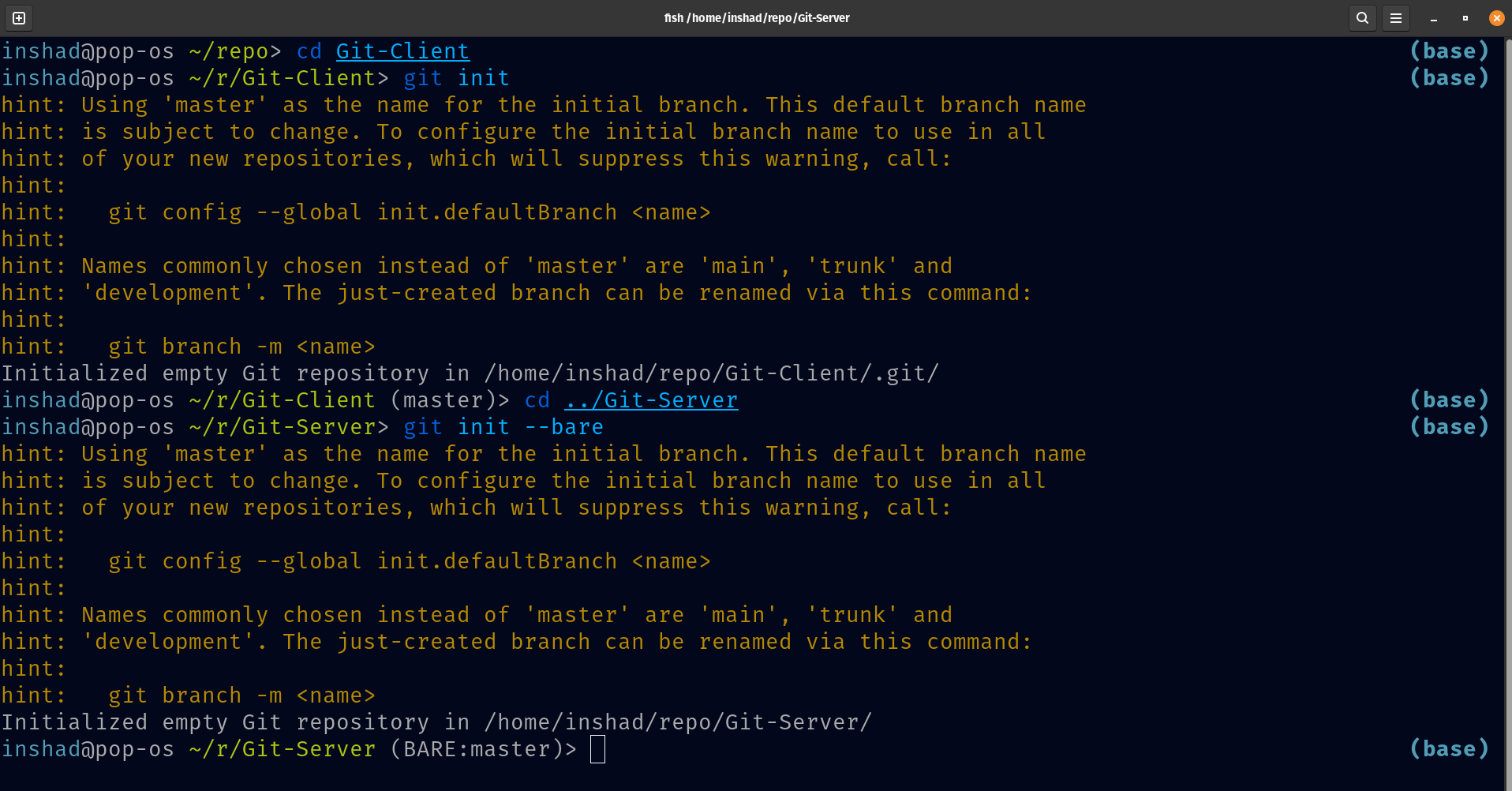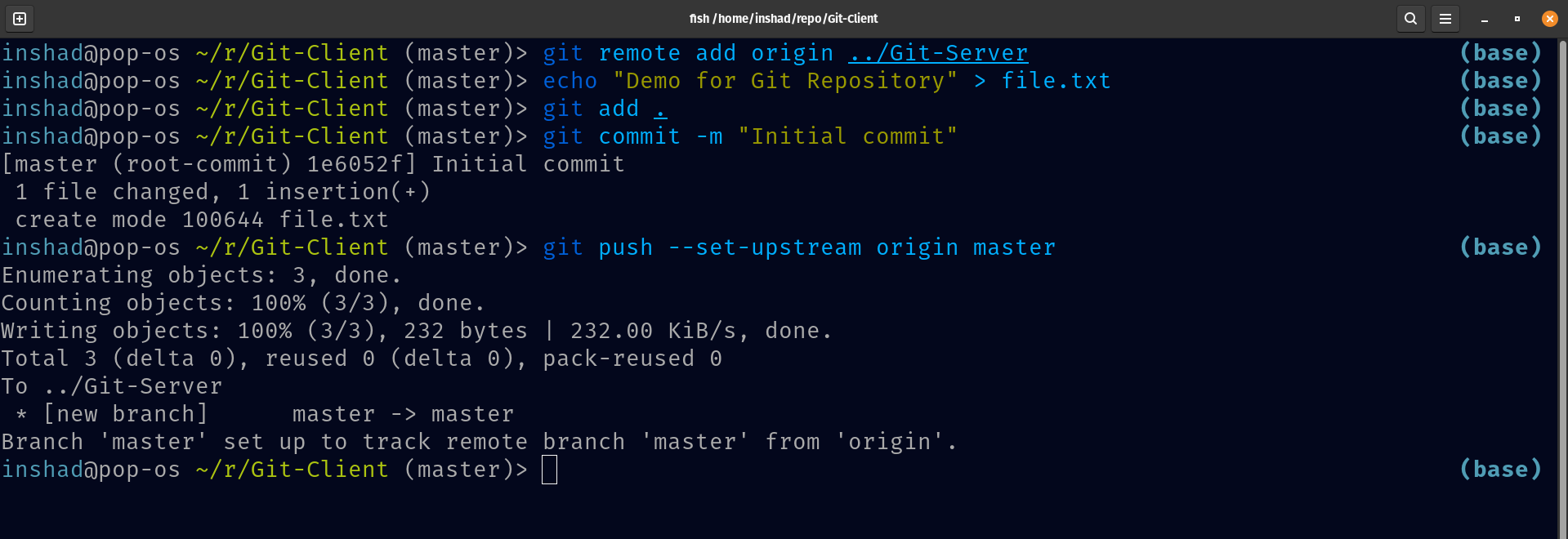Git Repository
A Git repository is a central location where Git stores all the files, directories, and version control history of a project. It acts as a complete record of the project’s development, allowing developers to track changes, collaborate, and easily manage different versions of the project. You can initialize a git repository using the git init command.

Bare Git Repository
A bare Git repository is a repository that does not have a working directory. Unlike a typical Git repository, which includes a working directory where you can modify and view files, a bare repository only contains the Git data and metadata required to manage the project’s version control history.
Creating a Bare Repository
To create a bare repository, you can use the git init --bare command. This straightforward process establishes a bare repository that has a distinguishing .git extension, signaling its purpose. By employing this simple command, you can create a central repository ready to handle collaboration and version control management.

Pros & Cons of a Bare Git Repository
Pros:
- You can gain real-world experience with distributed version control system.
- You can use your own remote Git repository without relying on GitLab, GitHub, or any other third-party client.
- Ideal for small remote teams.
Cons:
- Maintaining a remote server with code can be a headache.
- If the server is lost, all files will be lost.
- Cannot visualize the files stored in our remote repository.
Remote Repository
Bare repositories are often employed as remote repositories on servers. Developers can push their changes to the remote bare repository without directly modifying the files. This setup proves valuable for deployment workflows, continuous integration, and providing a centralized point for code base synchronization.
I have created two directories, Git-Client and Git-Server. Installed git in both directories, but Git-Server as a bare repository.

Also, I have added the Git-Server repository as a remote to the Git-Client repository, so that I could push changes from the Git-Client repository to the Git-Server repository.

By using git log command you can see similar changes in your remote repository(Git-Server).

One thing to note here is that even after pushing your newly created files you cannot see them into your remote repository and thus cannot edit or make any changes to them.
Conclusion
Bare Git repositories are essential for collaboration and project management, providing centralized collaboration, remote hosting, backup, and integration. They are lightweight and efficient, but have limitations in file modification and non-Git operations. Understanding their pros and cons enables effective teamwork and version control in software development projects.
